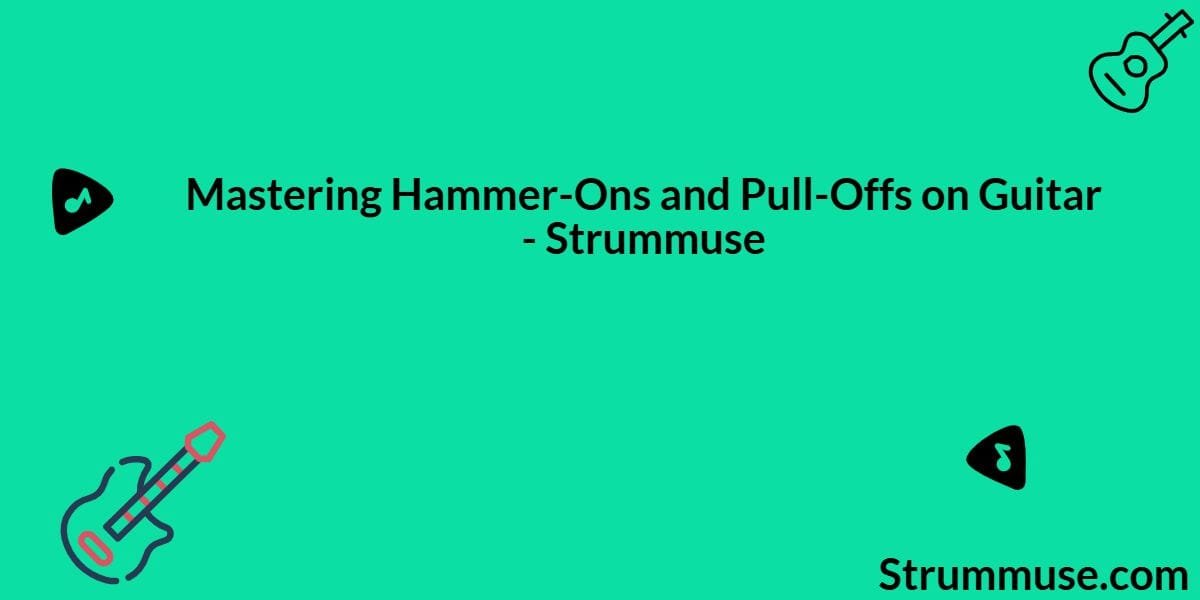Table of Contents
Hammer-ons and pull-offs are two of the most expressive and essential guitar techniques every player should master. They might sound fancy at first, but once you get the hang of them, they’ll add fluidity, speed, and emotion to your playing. Whether you’re into Hindi songs, classic rock, or fingerstyle blues, understanding these legato techniques will seriously level up your guitar journey.
I still remember learning my first hammer-on while playing the intro to “Tujhe Dekha To”—the smooth transition between the notes instantly made the melody more expressive. If you’ve ever admired those flowing, fast lead guitar lines, chances are they involved hammer-ons and pull-offs.
Let’s break it all down—from what they are to how you can use them to sound more professional and connected to your instrument.
What Are Hammer-Ons and Pull-Offs?
Hammer-ons and pull-offs fall under the umbrella of legato techniques. That means you’re connecting notes smoothly without picking each one.
Hammer-On:
A hammer-on involves striking a note with your fretting finger without picking the string again. For example:
E|---5h7---
You pick the 5th fret, then hammer your finger onto the 7th fret with enough force to sound the note.
Pull-Off:
A pull-off is the reverse. You play a note and then pull your finger off the string to let a lower note ring out:
E|---7p5---
You pick the 7th fret, then pull off to the 5th fret.
Both techniques are often used together in fast phrases or melodic runs.
Why They Matter – The Musical Benefit
- Smoother transitions between notes
- Speed building without excessive picking
- Adds emotion and flow to melodies
- Used in lead guitar, solos, and licks
- Fundamental to styles like blues, rock, Indian classical, and Bollywood melodies
When played well, hammer-ons and pull-offs make your guitar sing.
Step-by-Step: How to Practice Hammer-Ons
- Start with index finger on 5th fret (high E string)
- Pick the note once
- With your ring finger, quickly and firmly hammer the 7th fret
- Make sure the 7th fret rings clearly without re-picking
Pro Tip: Use the tip of your finger and practice slowly for clean sound.
Step-by-Step: How to Practice Pull-Offs
- Place fingers on 7th and 5th frets (high E string)
- Pick the 7th fret note
- Pull your finger slightly downward while removing it, so the 5th fret rings out
Pro Tip: Pull-offs aren’t just about lifting your finger—they need a flicking motion.
Pro Tips for Clean Execution
- Use lighter gauge strings if you’re just starting out
- Practice with a clean tone so you can hear each note clearly
- Don’t rush—speed comes with control
- Anchor your hand for better finger accuracy
- Always aim for clarity over speed
Where You’ll Hear Hammer-Ons and Pull-Offs
These techniques are everywhere! A few examples:
- Hindi Songs: “Tum Hi Ho,” “Pee Loon” intro melodies
- Western Solos: Eric Clapton’s blues licks, Metallica’s riffs
- Acoustic Fingerstyle: Smooth melodic transitions
- Indian Classical Guitar: Used in raag-based melodies to mimic vocal phrasing
Try this from “Pee Loon”:
B|--5h7--5h7--5p3--3--
Daily Exercises to Build Skill
- 5h7 Pull-Off 7p5 (High E) – Repeat slowly and cleanly
- Ascending scale hammer-ons – Pick only the first note of each pair
- Descending scale pull-offs – Use proper flick technique
- Combine both in phrases:
5h7p5, 7h8p7, 8h10p8
These patterns will build muscle memory and dexterity.
Be Patient: Mastery Takes Time
Learning hammer-ons and pull-offs isn’t just about moving your fingers—it’s about learning to trust your ears, feel the note, and stay consistent. Don’t be discouraged if it doesn’t sound perfect on day one. With regular practice and careful listening, you’ll get smoother and faster over time.
Related Learning Resources
- Guitar Finger Practice Techniques for Beginners
- Understanding Guitar Scales
- Mastering Guitar Strumming Patterns
- All About Guitar Tabs
FAQs – Hammer-Ons and Pull-Offs
Q: Do I need an electric guitar for hammer-ons and pull-offs?
A: Not at all! Acoustic works too—just make sure your fingers are strong and you practice clean execution.
Q: Why do my hammer-ons sound weak?
A: It’s likely a lack of finger strength or not pressing hard enough. Practice with intention and good technique.
Q: Should I always use hammer-ons instead of picking?
A: Not always. Use them to add smoothness, but balance with picking for articulation.
Final Words: Let Your Guitar Sing
Hammer-ons and pull-offs are where technique meets expression. It’s not about speed—it’s about feeling the notes under your fingers. Mastering them can transform how you sound as a guitarist.
So take your time, be consistent, and enjoy the process. Every note you play this way tells a story.

